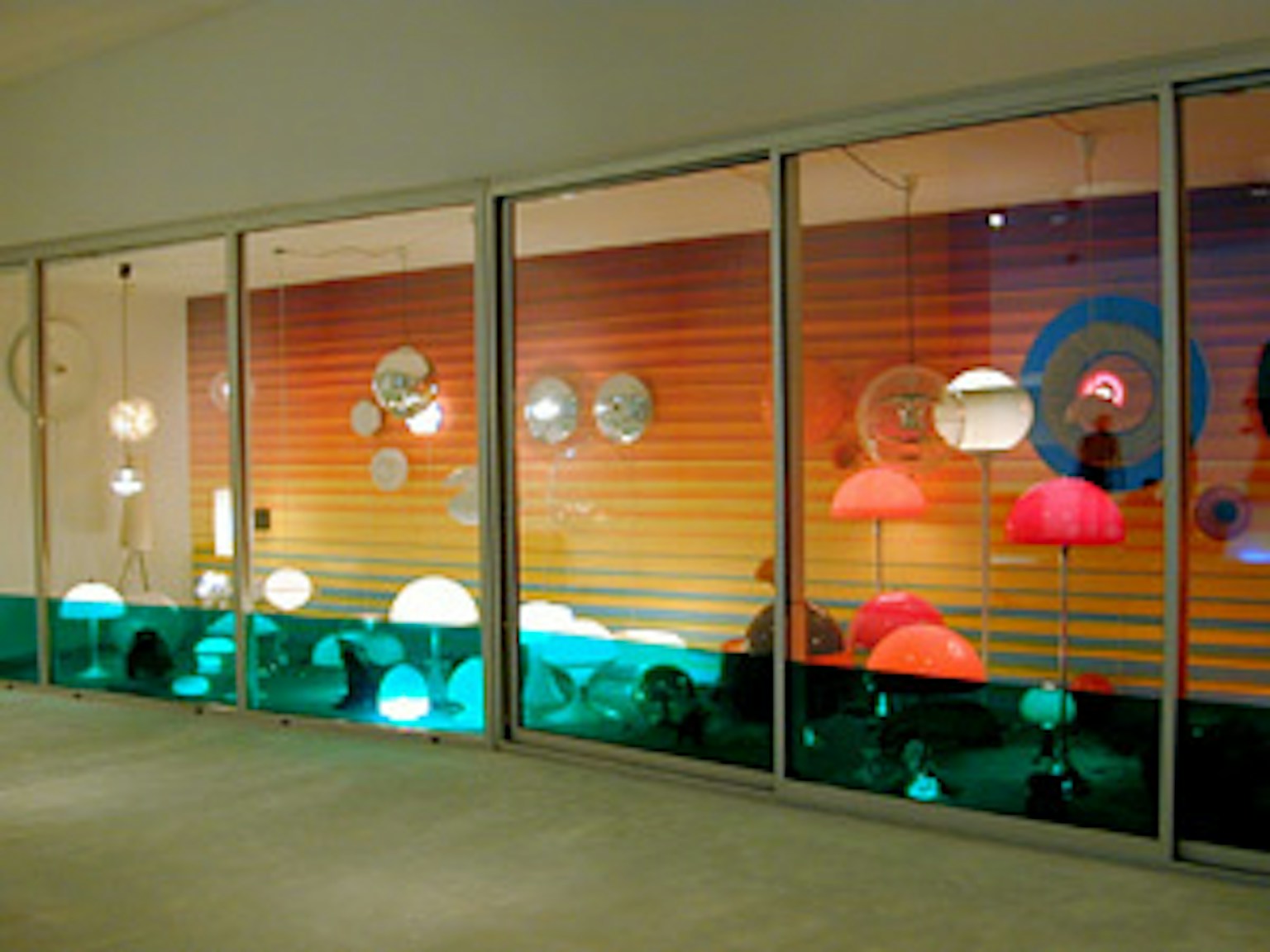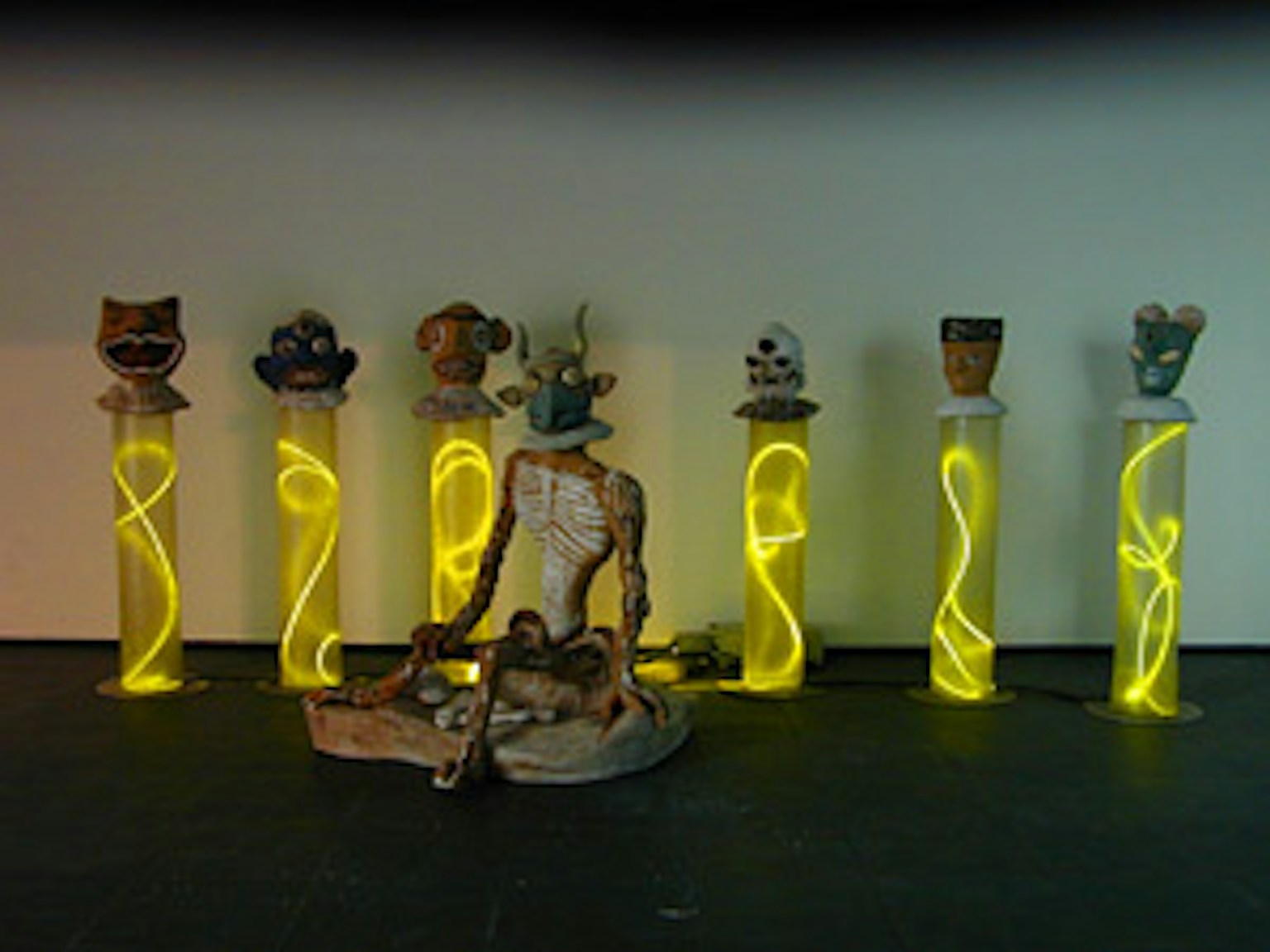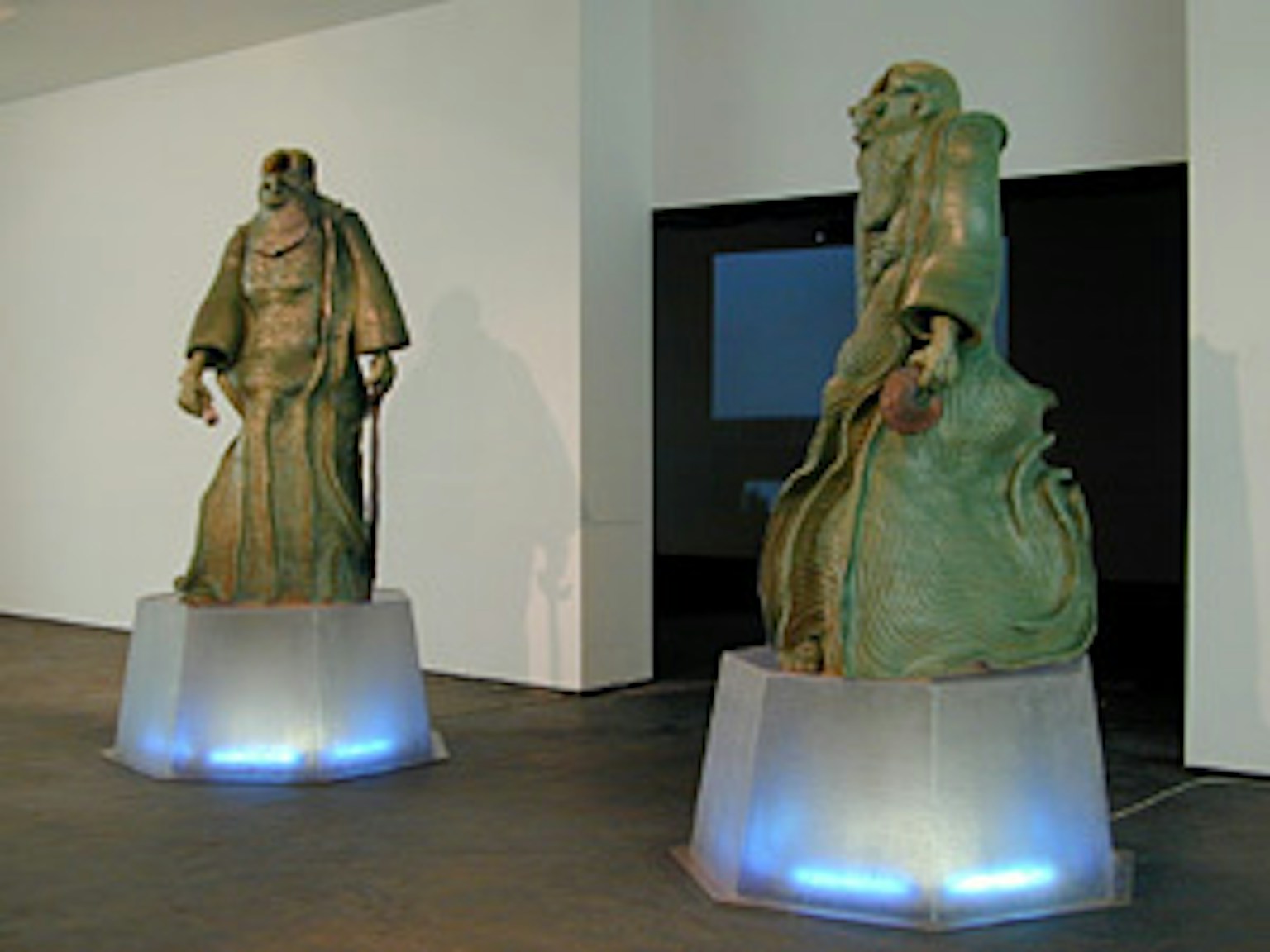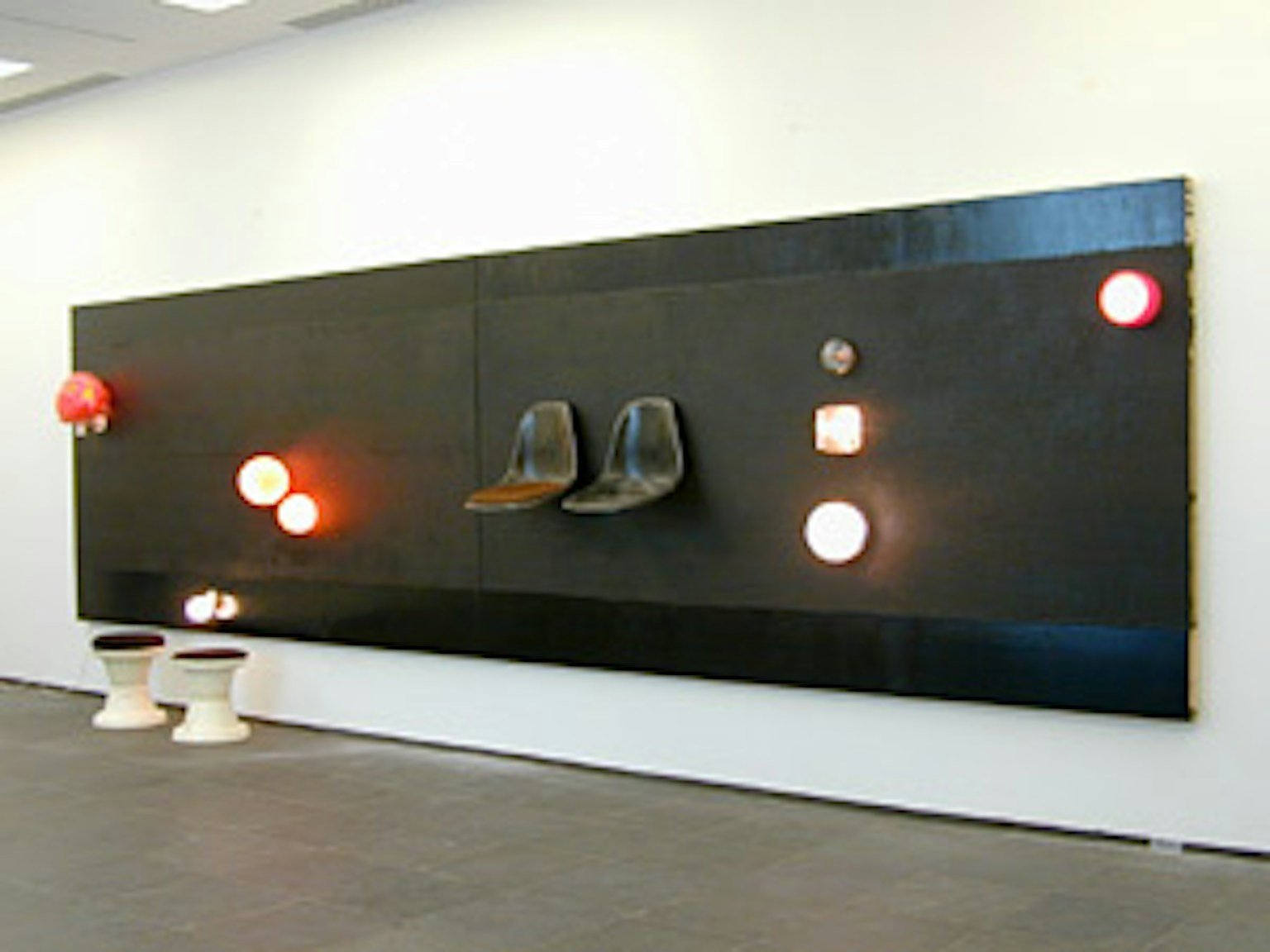Rob Birza is known as one of the most prominent artists of the younger generation in the Netherlands. He freely uses a variety of styles and genres together.
He draws his inspiration from art history and non-Western traditions as well as from mass culture. Nor can the materials he uses be easily placed under a single heading: he juxtaposes things old and new, worthless junk and precious art objects. The ‘Cold Fusion’ exhibition shows a survey of Birza’s work over the last ten years.
Cold Fusion is the title of an exhibition of Rob Birza’s work over the last ten years held in the Stedelijk Museum in Amsterdam. This exhibition will now also be held in the S.M.A.K. Rob Birza (1962) is known as one of the leading figures of a young generation of artists in the Netherlands. In Birza’s view there is no gesture that is too great, too theatrical or too passionate, and his work gives a new contemporary meaning to William Blake’s adage ‘exuberance is beauty’. The title of the exhibition refers to cold nuclear fusion, a scientific discovery that caused a great fuss a number of years ago only to be quickly exposed as a falsification. In Birza’s work opposite poles are constantly inverted: the frivolity of seriousness, and the seriousness of the game, the theatrical intensification of the ordinary and the trivial dimensions of spirituality. In the end, the abundance of stimuli appear to be directed at destroying every form of stimulation, in anticipation of the moment in which the fullness of the image changes into the vacant emptiness of anaesthesia. Birza is a master of changing positions. It is not the position that is important, but the changing itself, the wish to experience what it is like to give up one thing for another.
The artist, who also made a name for himself as a painter at the end of the eighties, has not only produced paintings, but also ceramic sculptures, assemblages and installations, video images, digital photos, a computer animation and a set for a dance production. He has no particular preference for any medium or a particular style. As he puts it, ‘You must have an eye for what lies on your way. And this is how I go about it: I pick up an image, take it in, and process it. To change it, to make something new of it.’ Rob Birza is a style surfer. He makes free use of styles and genres taken from art history, non-Western traditions and mass culture. He fills them with his personal preoccupations and ideas. Examples are the boisterous abstractions of the Dadaist Francis Picabia, the old-fashioned genre of floral still-lifes and the sour kitsch of horror which Birza used and incorporated in his Abstract Compositions (1996), Power Flower portraits (1996-1997), and Cosy Monsters from Inner Space (1999). It is also difficult to place the materials Birza uses under one denominator. In Birza’s view a jumble sale is where culture is sold off; it is a place where old and new things, worthless rubbish and costly works of art are to be found side by side, like brothers. The same applies to the collection in his studio that comprises streamlined furniture from the sixties and seventies, pre-Columbian earthenware, numerous lamps, odds and ends that are either pure junk or expensive designs, statues of Buddha, plastic stools, snack dishes, and so on. Sooner or later many of these objects become reincarnated in his work, where they are given a completely new connotation. In Ashtray Heaven (1994) for example, ashtrays are depicted as falling stars and in Frost and Frowsy (1994) burning lamps crackle like frost flowers. The innumerable stools and tubs that are assembled in Birza’s work seem to be inviting us to seat ourselves in his imaginary world. The image entices but at the same time it must remain inaccessible. The chairs are not for sitting on. In the installation Buddha’s Horizon/View of Lights (1994) - which is a cross between a shop window of a lamp shop and a diorama full of excitement and adventure – Birza arranges two comfortable settees for spectators to sit on but he places them behind the glass wall that protects this strange universe and prevents anyone from truly entering it even though it can be seen and heard.




